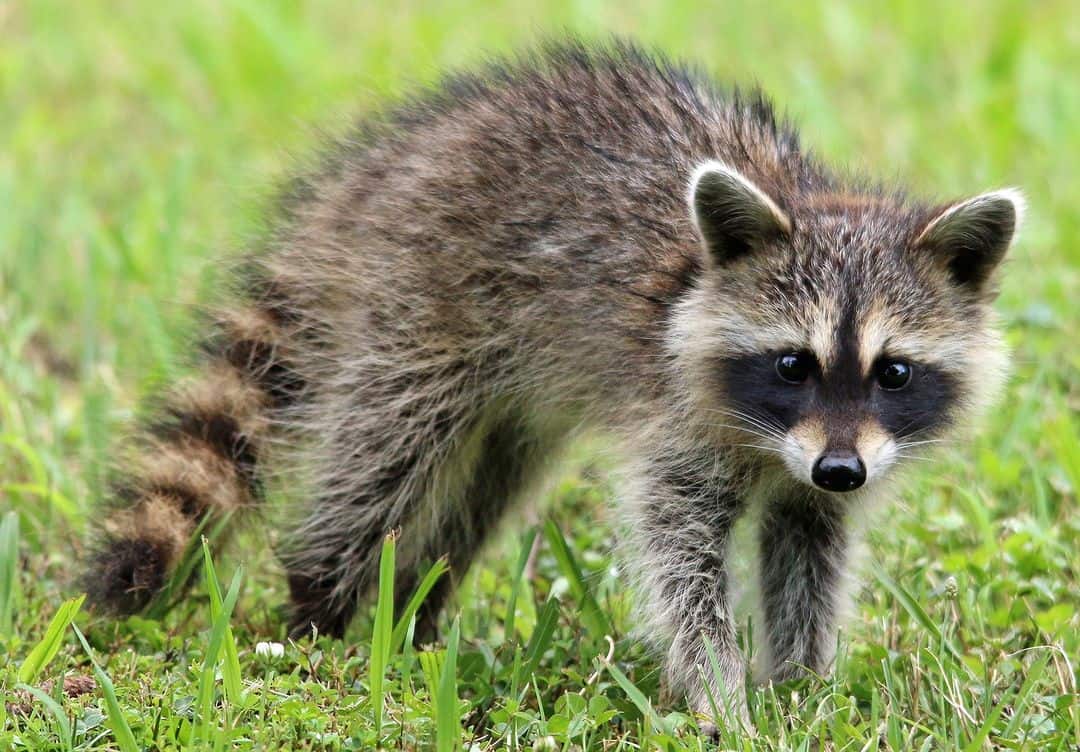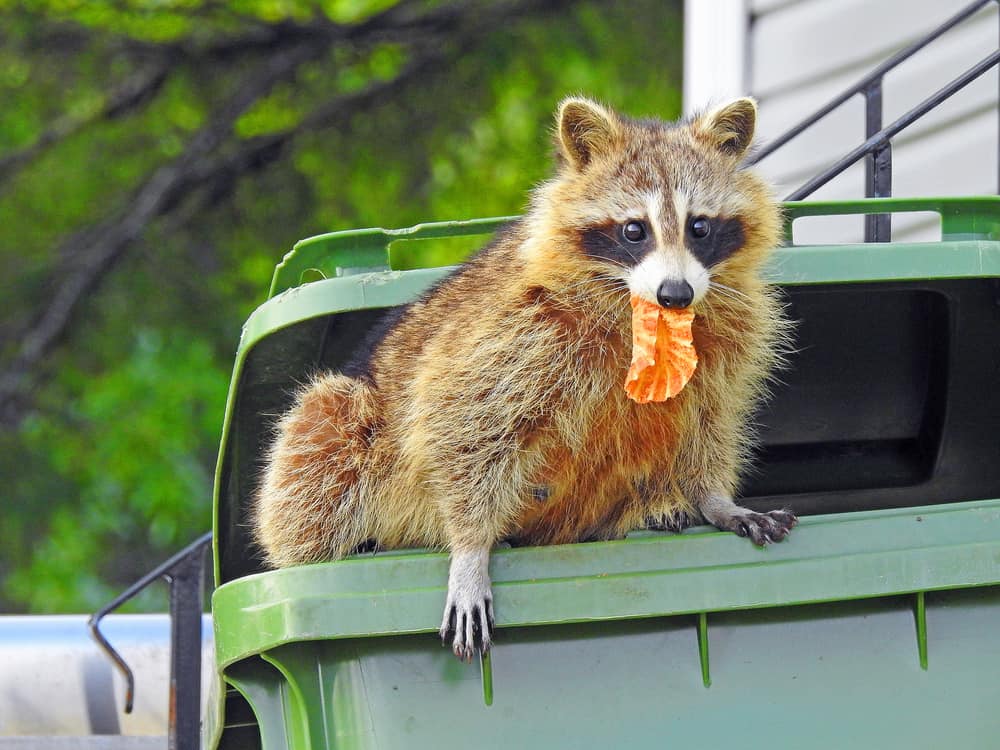Killing an animal is not an easy topic to discuss but sometimes we feel like we don’t have a choice. It is important to figure out when that truly is the case, however, and when there are better solutions. It’s also important to figure out how you’re going to do what needs to be done as there are multiple different methods, each with its pros and – often horrific – cons.
So, why would you ever need to kill a raccoon, how to kill a raccoon, and what are some of the often better alternatives you shouldn’t skip over?
Why kill a raccoon?
Killing raccoons is never an easy thing, especially if you’re not in the habit of harming animals for no reason. And, while it’s both common and annoying when raccoons rummage through our trash cans and make a mess of things, that’s obviously not a good enough reason to kill the little things – you can always just get raccoon-proof garbage cans and solve the issue that way.
Another thing to note is that killing raccoons isn’t always allowed by the law – depending on which state you’re in and on what the exact circumstances are, killing the animal may just be punishable by law. If the raccoon is actively damaging your property, however, the law will usually allow its killing.
That being said, there are cases when simply removing, repelling, and coercing the animals from leaving your property isn’t working. There are also situations when the raccoon has and threatens with rabies or other health concerns, is a threat to your pets or family, and so on.
In those cases, or when your efforts at removal just keep failing, killing the raccoon and throwing the carcass away may just seem simpler than trapping and relocating the live animal.
How to kill a raccoon?
So, you’ve decided that this is your only or best option – how should you go about it, however? There are easier and harder methods, as well as more humane ones and methods that we really wouldn’t recommend.
1. Carbon dioxide chambers
A CO2 chamber is one of the easiest, quickest, and least inhumane methods for killing a trapped animal such as a raccoon. This is often used to euthanize lab animals with minimum pain and distress to the animal and with minimal hassle for the humans. Few homeowners actually have such chambers at home, however.
2. Use a lethal body-grip trap
Lethal raccoon traps work relatively well and can kill the animal in a matter of seconds with as little pain as possible. This makes them a great raccoon control option and they can work for rats and other animals too. All you have to do is bait the trap and position it properly, as well as make sure that you won’t accidentally catch and kill something you didn’t mean to.
3. Just shoot it
If you don’t own any of the above but you do have a gun, simply shooting the raccoon is also obviously an option (as long as it’s not against our state’s regulations). The only other issue here is that you may miss if the animal is out in the open, you may accidentally harm someone else, or you may damage parts of your property.
So, it’s usually easier to first trap the raccoon in a live trap before you go and start pulling the trigger. Naturally, however, this raises the next obvious question – if you’ve already managed to trap the raccoon, why bother shooting it?
4. Use a long knife or another blade
If you have indeed trapped the raccoon in a live trap and you’re sure you have to or want to kill it but you don’t own a gun permit, you can always just use a long knife or even a sword if you have something like that. This once again brings up the question of “Why bother?”, however, when you can just use the live trap to relocate the animal away from your property.
How NOT to kill a raccoon?

First and foremost, whatever you decide to do, we strongly urge you not to try and drown the animal. Of all the ways to dispose of or kill a raccoon, drowning is undoubtedly one of the cruelest, most inhumane, and most barbaric methods.
Not to mention that you may get hurt too if you’re not careful as the raccoon will go wild and may harm you if you make even the smallest misstep. Literally, everything else is better both for the raccoon and yourself.
How about using a fast-acting poison, however? There are lots of potential options for raccoon poison – anticoagulant, strychnine, antifreeze, rat poison, Bromethalin, Cholecalciferol, and others. You can quite easily bait a raccoon to try any of those using poisoned pet food. So, what is the issue here? There are quite a lot of them, actually:
- Raccoons are much larger than rats and often surprisingly sturdy – this means that very often even a huge amount of poison isn’t enough to kill them.
- If you do manage to trick the raccoon into eating a lethal dose of poison, the dying part will always take hours, usually more than 24 hours. What’s more, each of the poisons above works in incredibly painful ways, making this an even more brutal and inhumane method than drowning.
- Given how slowly poisons work, the raccoon will almost always use that time to hide somewhere you’ll have trouble reaching afterward. This poses a lot of issues and risks as the carcass can then be reached and touched by other animals and pets, it can smell tremendously bad, it can contaminate the area around it, and more.
- Additionally, most states in the US and most other countries ban the use of poison on wild animals such as raccoons for various reasons.
How can you deal with a raccoon problem without killing the animal?
If you don’t want to get your hands dirty – or you’ve realized that you don’t need to, unless the animal has rabies or something similar – you may look for some non-lethal options. Fortunately, those are much easier to do than you might have anticipated.
1. Use a live cage trap
We mentioned those above as they are often necessary if you want to kill the raccoon too. So, they work just as well if you just want to catch the animal instead. Live traps such as these are often used for mice, rats, squirrels, and other rodents – the only difference with raccoons is that you’d want the trap to be big and sturdy enough for the raccoon to get in and not be able to escape.
Once that’s done, simply drive the animal somewhere far away from your property, release it, and go back. As long as you follow that up with making your property inhospitable for raccoons (locked trash cans, sealed holes, no food leftovers, etc.), you shouldn’t have future infestation issues.
2. Exclude it
Probably the simplest, easiest, most humane, and most effective way to deal with raccoons is exclusion. And, no, this doesn’t (just) mean using raccoon repellents although utilizing repellents can help speed up the process.
The key to exclusion, however, is similar to how you deal with a cat that is going places it shouldn’t be – you cut the animal’s access to those places. Say raccoons have settled in your attic – all you need to do is:
- Locate all the access points to and from the attic the raccoons can use
- Seal all of them except the one they use most often
- Install a one-way door on that access point
And voilà! The raccoons will soon all exit your attic and be left unable to go back into it.
3. Call a professional trapper
There are professional trapper services in virtually every state in the US as well as in many other countries. Here is a quick list of some US-based services but there are many others. So, if none of the pest control services on that list seem suitable, you can always just look up raccoon and wildlife trappers in your area online and you’re bound to find quite a few options.
Depending on where you live, some trappers may be a bit costly but they will save you a lot of hassle, they’ll all but eliminate any health and injury risks, and they’ll typically do a more extensive job than the average person would be able to on their own.
In conclusion
Killing a raccoon is a tricky, risky, and unfortunate thing to have to do. There almost always are better options too, unless you’re sure the animal has rabies. Even then, it’s usually better to call a professional than it is to start throwing poison on the floor or waving your gun around.
Even if you don’t want to deal with contractors, it’s still usually easier to just set up a few live traps, catch the furry perpetrators, remove them from the premises, and then just make your property a little less tempting for future raccoon visitations.
